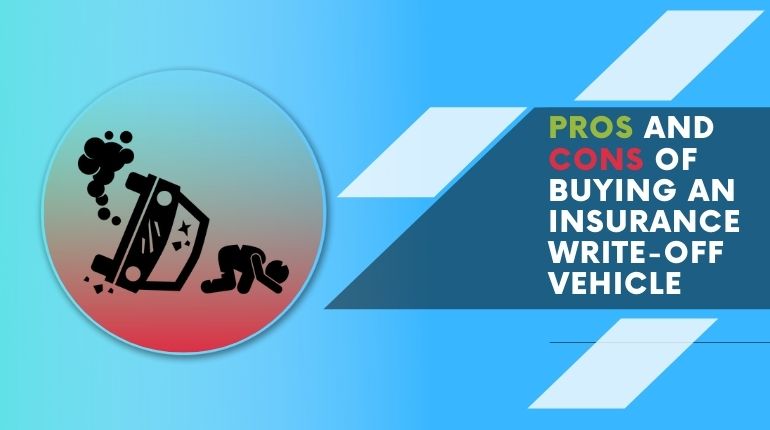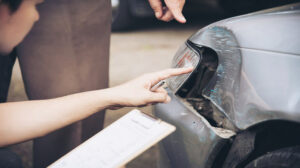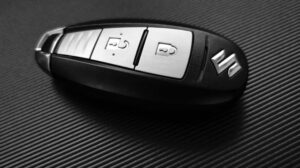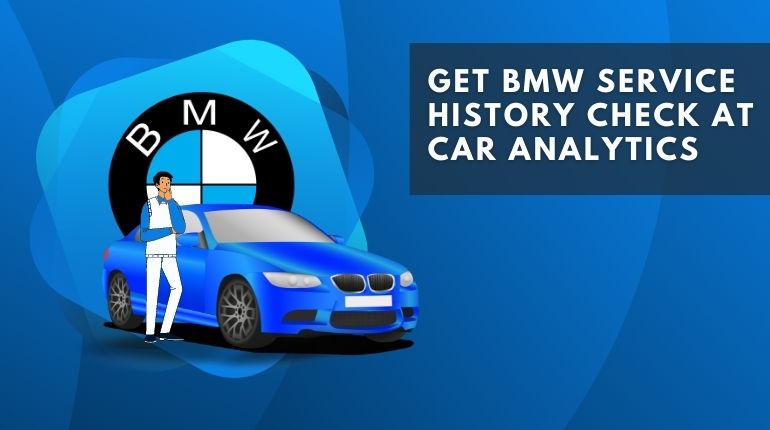When you are in the market for a secondhand vehicle, the idea of buying an insurance write-off might not sound useful to you. Right? But buying a write-off vehicle helps you to save money on the note if the DVLA permits you to drive after repair.
First, check the vehicle insurance category it lies in, and then you will be able to decide whether it is worth the time and energy you will put into repairing it. This insurance write-off guide explains everything about written-off vehicles and gives you a piece of advice on buying a written-off car.
What is an insurance write-off?
Insurance write-off means if your vehicle has severe damage results in not meeting the legal driving standards or when the repair cost is higher than the current car value. The damage may cause due to accident, water or fire. What happens afterwards depends on the insurer and the salvage agent’s decision on the write-off category.
There are four write-off categories namely A, B, S, and N, that are part of a code of practice prepared by the Association of British Insurers (ABI). ABI took assistance from different institutes such as the DVLA and the Department for Transport, and the British Vehicle Salvage Federation to develop these classes.
How can I find out if a car is written off?
You simply need to perform an insurance write-off check. As this is a premium service, no company in the UK offers this as part of their free vehicle history check.
Once the insurance company writes off the vehicle, a VIC marker is placed against the DVLA record. Even if you bought VIC marked vehicles, you can’t get the logbook until the car has passed a VIC. Hence for buying a used car, you should check the car is written off before or if the vehicle is marked.
Car write-off check from us costs you £9.95, which is the cheapest check. Along with the important checks, you can find the highlights of serious issues for any bike, van, car, truck etc.
What are insurance write-off categories?
ABI updated the write-off categories in October 2017, where they changed Category C and Category D with Category S and Category N, respectively.
Category A: Category A write-off means the damage is severe to structural parts that can’t be repaired. The parts include the car’s chassis due to a crash or burnt out in a fire. Either such vehicles have no parts to salvage, hence it is worth destroying so that no component from it can be used again.
Category B: It is similar to the category A write off where a damaged vehicle is not worth repairing. The plus of category B write off vehicles is that their remaining parts can be used on other vehicles. A ‘Cat B’ vehicle is also shredded after removing the useable parts.
Category S: A ‘Cat S’ vehicle means that the accident has caused structural damage to it. You cannot repair it on your own, but it can return to the road after appropriate repairs from a professional mechanic. The ‘S’ here stands for ‘Structure.’
Category N: The ‘N’ stands here for Non-structural damage meaning the accident caused harm to brakes, steering, suspension, or any other component. Like ‘Cat S,’ the ‘Cat N’ cars can return to the road after proper fixes.
Should you buy a cat s or cat n car?
The pros for car shoppers to opt for insurance write off is the price.
- ‘Cat S’ or ‘Cat N’ vehicle sells at a very cheaper rate than an undamaged model of the same age and mileage. Therefore, many car dealers, repairers, and average car lovers buy written-off automobiles. Before purchasing a damage-repairable vehicle, you need to estimate the potential cost to make it roadworthy again.
- If you are purchasing it to make a profit, analyze carefully if it could give you a reasonable earning after the repair. You should also understand that ‘Cat S’ and ‘Cat N’ cars will sell at a lower price than those selling at a showroom, no matter how proper the repairs are.
- Alternatively, if you like to buy the vehicle for your own use, then you might be able to endure a one-time massive repair bill. However, here too, you must have a good knowledge of the automotive market. If the repairs take the price closer to the undamaged vehicle in the market, why take this risk?
Recommended for you: Cat N and S write off category explained
Risks of buying a write-off car:
- Failed to inspect: Never buy a Cat N or Cat S car without taking a car inspection report (learn the difference between car check and car inspection). Services like RAC and AA have trained professionals who will identify the dangers related to the vehicle’s condition, its reliability in addition to any issues under the surface level. It will cost you a lot higher than our full auto-check, but it can be invaluable when you go to ensure a Cat S or Cat N vehicle.
- Can I insure the write-off car? Inform your insurer if you bought a write-off car. However, it is quite risky as not all service providers cover for write off because they don’t know how good the repairs were fixed before and what if the vehicle gets repaired in the future. Thus, most of the insurers don’t risk giving covers to the write-off cars.
Conclusion
We have given the pros and cons of buying an insurance write-off, and now the ball is in your court. You must decide if you are willing to take the risk with a proper assessment of the repairs or not. Yes, you can buy a written-off vehicle at a fraction of the price of an undamaged car. But, it can be a huge gamble if your own evaluation of the car goes wrong.
Answering your questions
1. Does a dealer have to inform you that the car has been in an accident before selling it?
Dealers are required to disclose any damage that has been caused by an accident and which has not been repaired. This information must be included in the vehicle’s history report, which is recorded by the DVLA.
If a dealer is selling a car that has been in an accident, they must provide the buyer with a copy of the accident report. Failure to do so could result in prosecution. Informed buyers should always request to see the vehicle’s history report before purchase and should be aware that accidents can significantly reduce a car’s value.
2. Does “HPI clear” mean no accidents?
If a vehicle is listed as ‘HPI clear,’ it has undergone an HPI check and has no hidden history. A HPI-cleared used car should have no officially recorded issues with its history.
3. Should I buy a written off car?
If you’re considering buying a written-off car, it’s important to know what category the car falls into. In the UK, there are four categories for written-off cars namely A,B,C/S,D/N..
Category S (Structurally Damaged Repairable) These cars, formerly classified as category C, can be restored and have only structural damage to the chassis. All Cat S vehicles must be re-registered with the DVLA before taking it on to the roads.
Category N (Non-Structurally Damaged Repairable) formerly known as category D, can also be repaired. These vehicles’ structural integrity has not been compromised because they have only been scratched on the surface. Before resuming driving, you do not need to re-register Category N cars with the DVLA, but you must notify them that your vehicle has been written off.
If you would like to manually check cat S or N vehicles you can get a vehicle inspection.
4. What does “been in an accident” mean?
Unfortunately, it is impossible to know for certain if a vehicle has been in an accident in the past. Many drivers do not notify their insurance companies.
In other words, if no insurance record exists, there are very few ways to know – it all depends on how good the repairs were.






